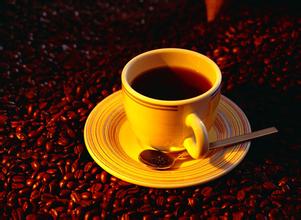Introduction to the difference between Coffee Solar treatment process Chart and Water washing method
Introduction to the difference between Coffee Solar treatment process Chart and Water washing method
1. Drying in the sun
The coffee fruits are scattered directly on the drying ground to dry, sometimes with the help of a dryer. When the moisture content reaches 12%, the sun-dried coffee fruit can be stored in the warehouse. Sun-dried coffee fruits have a longer shelf life than those without coffee fruits and parchment (Pulped Natural, Semi-washed)
This method is often called semi-washing (Semi-washed). In fact, there is no water involved in the production process. I don't know who used the word Semi-washed in the first place, so some people translate Semi-washed directly into semi-dry process, which, though not exact, is at least one layer less ambiguous than semi-washing.
Farms that use the washing method must build washing ponds and be able to introduce an endless supply of running water. During the treatment, the mellow beans are put into the pool and passed back and forth, using the friction of the beans and the power of running water to wash the coffee beans to a smooth and clean farm where the washing method is used to build a washing pool and be able to introduce an endless supply of live water. During the treatment, the finished mellow beans are put into the pool, and the coffee beans are washed smooth and clean by the friction of the beans and the power of running water. At this time, the coffee beans are still wrapped in the pericarp with a moisture content of 50%. It must be dried to reduce the moisture content to 12%, otherwise they will continue to be mellow, moldy and rotten. The better treatment is to use sunlight to dry, although it will take 1-3 weeks, but the flavor is very good and very popular. In addition, machine drying is used in some places, which greatly shortens the processing time and makes the flavor inferior to that of sun-dried coffee.
In the case of proper sun treatment, there will be higher sweetness and various ripe fruit flavors. When the coffee fruit is dried, it will be separated from the dried pericarp, pulp and endocarp.
After getting rid of the peel, the sun treatment is also a particularly time-consuming place, which requires coffee farmers to manually screen and pick out defective beans. Of course, drying in the drying field is also a risky way, because if it is not handled properly, the whole batch of coffee fruit will be destroyed. To reduce risk, smart coffee farmers also use African beds as a drying method to better dry coffee fruits and reduce spoilage. Happy coffee growers pick relatively ripe coffee cherries from trees and pour them into a pool filled with water for the first screening, which is the same as washing. After the screening is completed, it is sent to the drying ground for drying and fermentation for about a month. During this month, the coffee fruit needs to be constantly turned and observed in order to prevent the coffee fruit from excessive fermentation or even spoilage.

Important Notice :
前街咖啡 FrontStreet Coffee has moved to new addredd:
FrontStreet Coffee Address: 315,Donghua East Road,GuangZhou
Tel:020 38364473
- Prev

Video tutorial for beginners to beat milk foam manually-how to make milk foam without big bubble coffee beans
Video tutorial on how to beat foam manually-one is the temperature at which the foam starts and ends, and the other is the temperature at which the foam is made. These two temperatures are very important for beginners, which is directly related to the mastery of the principle of foam. Let's start with foaming. Milk is cold at first (preferably refrigerated at 5 ℃), which can prolong foaming time.
- Next

Why is the milk foam floating on the coffee when pulling flowers?-the skill of playing milk foam with coffee flowers.
Why is the milk foam floating on the coffee when pulling flowers? coffee blowing foaming skills: if you are upset or not paying enough attention when playing the foam, it is easy to cause the steam pipe to be above the surface of the milk rather than just under the milk. The result is milk spatter and larger milk bubbles. Of course you can still get a lot of foam in the flower cup, but
Related
- What is the meaning of lactic acid fermentation with coffee bean treatment?
- How to judge the state of foam by sound?
- How does the latte pull out the unicorn pattern? Come to get for a little trick to improve the flower pull!
- Will flower pulling affect the taste of the latte?
- Do you know the history of coffee?
- The difference between honey treatment and sun washing what is raisin honey treatment?
- What kind of milk can a novice use to make coffee foam to keep the foam longer? The correct method and skills of milking tutorial sharing
- Why do washed coffee beans taste sour? Flavor characteristics of washed Coffee
- Introduction to the skill of how to practice the size and height of water injection around the circle of hand-brewed coffee
- How do beginners practice coffee flower drawing from scratch?

